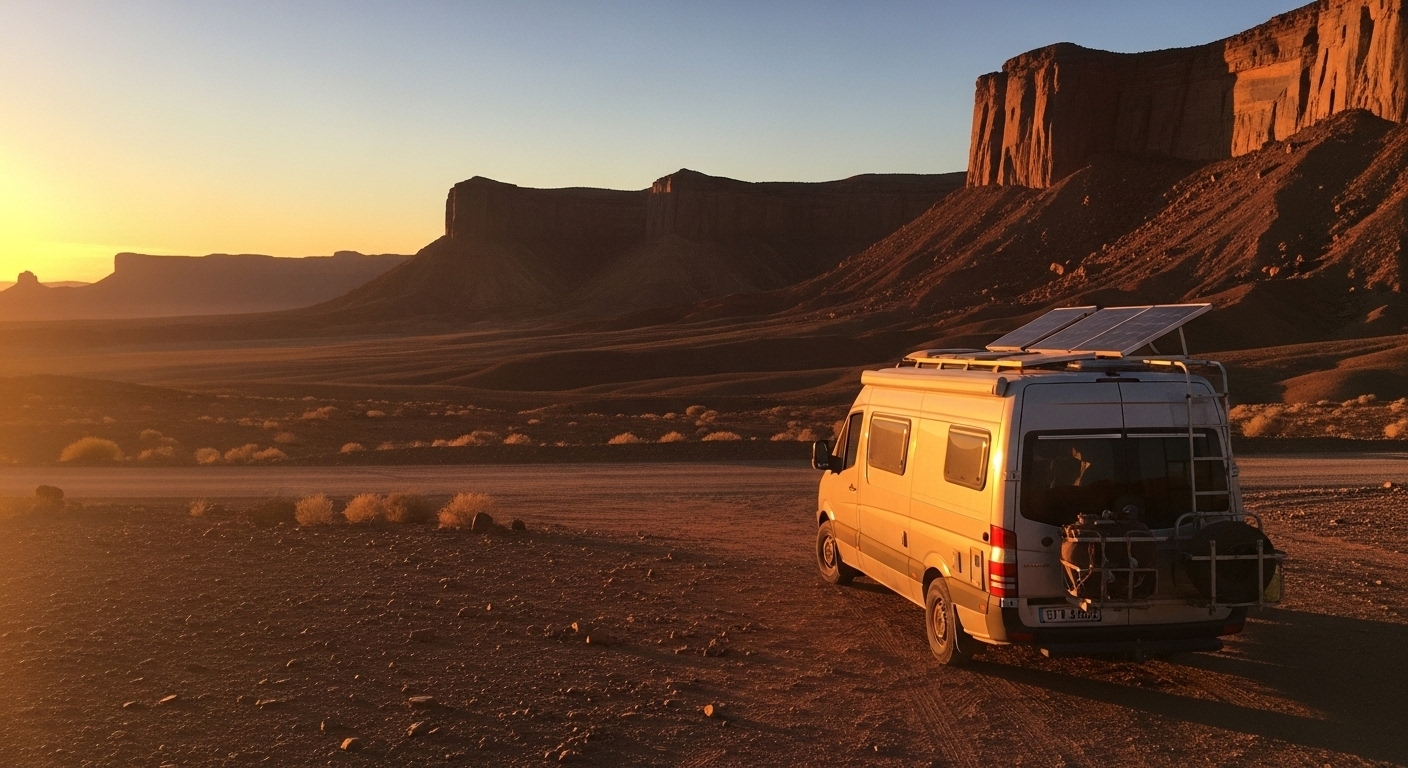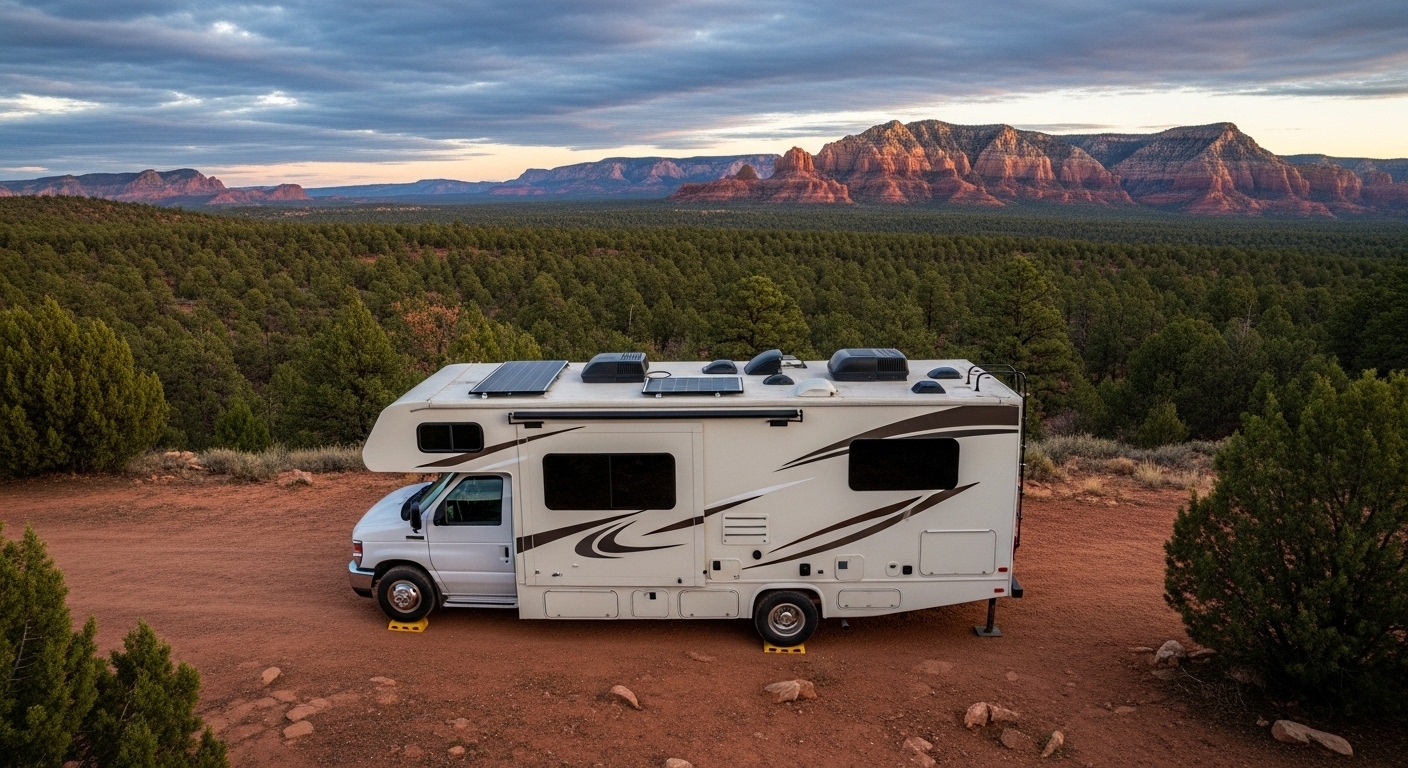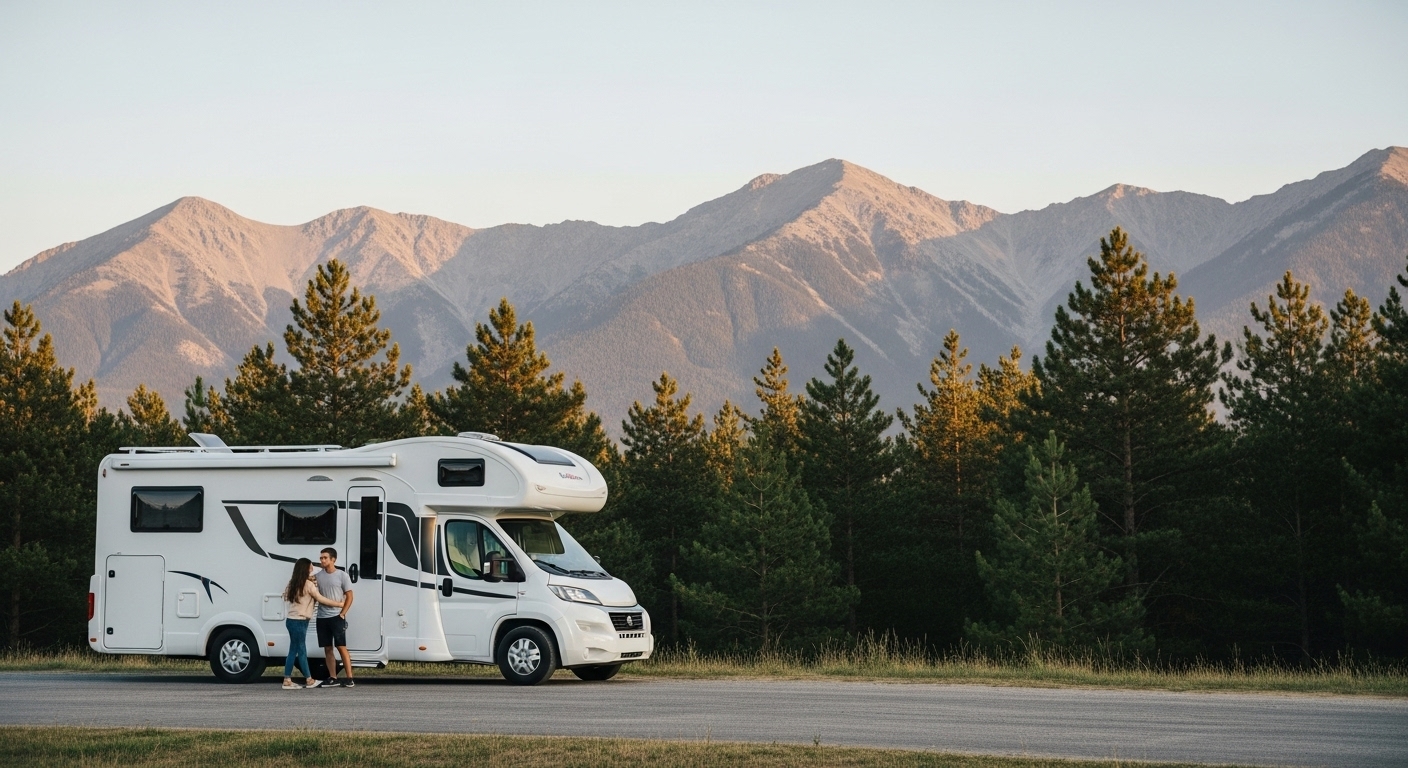
Boondocking 101: Free Camping Guide for Beginners
Boondocking—also called dry camping, wild camping, or dispersed camping—is the practice of camping without hookups in free or low-cost locations. It's one of the most rewarding aspects of RV life, offering solitude, stunning natural settings, and significant cost savings. This guide covers everything you need to know to start boondocking successfully.
What is Boondocking?
Boondocking means camping without connections to water, electric, or sewer services. You rely entirely on your RV's self-contained systems—fresh water tanks, batteries, and propane. Locations range from public lands to parking lots, each with different rules and amenities.
Types of Boondocking
- Dispersed Camping: Free camping on BLM (Bureau of Land Management) and Forest Service lands
- Harvest Hosts: Free overnight parking at wineries, farms, and breweries (membership required)
- Boondockers Welcome: Free camping on private property through member network
- Parking Lot Camping: Overnight stays at Walmart, Cracker Barrel, truck stops, and casinos
- City/Street Parking: Legal parking in cities allowing overnight RV parking

Essential Systems for Boondocking
Power Requirements
Solar panels are the gold standard for extended boondocking. A 200-400 watt system with lithium batteries provides power for lights, fans, phones, laptops, and small appliances. Add a generator for air conditioning or high-power needs.
Solar Setup Recommendations:
- 400 watts minimum for comfortable living
- MPPT charge controller for efficiency
- Lithium batteries (lighter, longer-lasting, deeper discharge)
- Power inverter (2000+ watts) for AC appliances
Water Management
Fresh water is precious when boondocking. Standard RVs carry 30-60 gallons, lasting 3-7 days depending on usage. Extend water supplies through conservation:
- Take "navy showers" (wet, soap, rinse)
- Use paper plates to reduce dish washing
- Capture rinse water for gray tank reduction
- Install low-flow faucet aerators and shower heads
- Carry extra water in collapsible jugs
Waste Management
Black and gray tanks must last between dump stations. A family of two can typically go 5-7 days before needing to dump. Use biodegradable toilet paper, avoid excessive gray water use, and consider composting toilets for extended boondocking.
Finding Boondocking Locations
Useful Apps and Resources
- iOverlander: Crowdsourced camping spots with reviews and GPS coordinates
- Campendium: Comprehensive database of campgrounds including free sites
- FreeRoam: Public land boundaries and camping information
- AllStays: Walmart and truck stop locations allowing overnight parking
- FreeCampsites.net: Database of free camping across the US

Public Land Opportunities
BLM Land: Most BLM land allows 14-day stays in the same location. Popular areas include Arizona, Nevada, Utah, and California deserts. Some locations require permits or have specific restrictions.
National Forests: Dispersed camping typically allowed away from developed campgrounds. Follow Forest Service regulations regarding distance from water sources and roads.
Wildlife Management Areas: Many state WMAs allow camping during non-hunting seasons. Research specific regulations for each location.
Boondocking Etiquette and Leave No Trace
Responsible boondocking ensures these opportunities remain available:
- Pack Out Everything: Leave no trash, including micro-trash like cigarette butts
- Use Established Sites: Don't create new camping spots; use existing disturbed areas
- Respect Quiet Hours: Keep generators off 10pm-6am, minimize noise
- Proper Waste Disposal: Never dump gray or black water on the ground
- Stay on Roads: Don't drive off-road or damage vegetation
- Respect Wildlife: Observe from distance, store food properly, don't feed animals
- Camp 200+ Feet from Water: Protect riparian areas and water quality
- Follow Fire Restrictions: Check current regulations; use existing fire rings
Safety Considerations
Location Assessment
Before settling in, evaluate:
- Ground stability and levelness
- Weather forecast and potential hazards (flash floods, high winds)
- Cellular signal for emergencies
- Road conditions for departure
- Wildlife activity
- Distance to nearest services
Security Practices
- Trust your instincts—if a location feels wrong, move on
- Camp with other RVers when possible
- Keep doors locked, especially at night
- Have emergency plans and communications
- Know local emergency services contact information
Essential Boondocking Gear
- Solar Panels and Batteries: Primary power source
- Generator: Backup power for cloudy days or high-demand appliances
- Leveling Blocks: Find level spots in uneven terrain
- Water Containers: Extra 15-30 gallons extends stays
- Portable Waste Tank: Tote tank for emergency gray water disposal
- Flashlights and Headlamps: Essential for dark campsites
- First Aid Kit: Comprehensive supplies for remote locations
- Communication Devices: Cell booster, satellite communicator for emergencies
- Basic Tools: For repairs and campsite setup
- Weather Radio: Monitor conditions in areas without cell service
Common Boondocking Challenges
Running Out of Resources
Monitor tank levels daily. Fresh water gauge often inaccurate—physically check tanks. Plan departure with comfortable safety margins on all resources.
Extreme Weather
Desert heat tests air conditioning and power systems. Winter cold drains batteries faster. Insulation improvements and awning use moderate temperature extremes.
Loneliness
Remote camping can feel isolating. Balance solitude with social time at campgrounds or towns. Join boondocking groups for community connection.
Limited Internet
Download entertainment, maps, and work materials before losing signal. Cellular boosters help but don't work everywhere. Plan accordingly for work requirements.
Getting Started with Boondocking
Start Small: Begin with one-night stays in parking lots, then progress to 2-3 nights on public lands near services. Build confidence gradually before attempting week-long remote stays.
Test Your Systems: Spend a weekend in your driveway without hookups. Identify system weaknesses and upgrade capacity before depending on it.
Learn from Others: Join boondocking Facebook groups, watch YouTube channels, and talk to experienced boondockers. Learn from their successes and mistakes.
Invest Wisely: Quality solar, batteries, and water conservation equipment pay for themselves quickly through free camping. Calculate payback period—often 6-12 months.
Final Thoughts
Boondocking represents RV living at its finest—waking to pristine sunrises, enjoying solitude in stunning landscapes, and camping free in America's most beautiful places. While it requires preparation, investment, and adjustment, the rewards far exceed the challenges.
Start small, respect the land, and embrace the learning curve. Soon you'll understand why experienced RVers consider boondocking the ultimate camping experience. Welcome to free camping—your adventure awaits!
